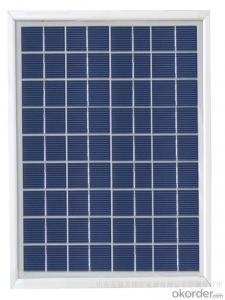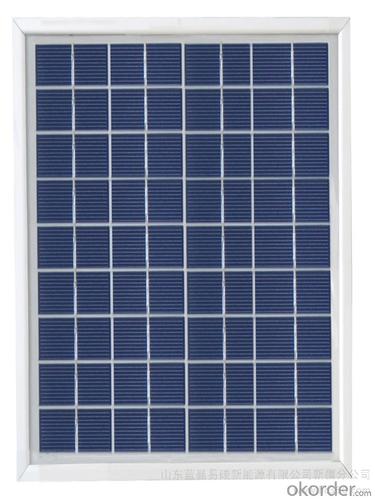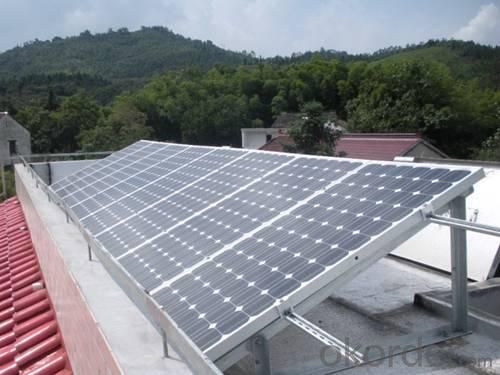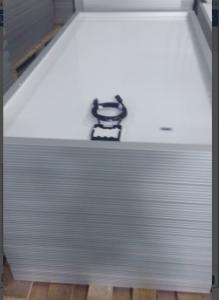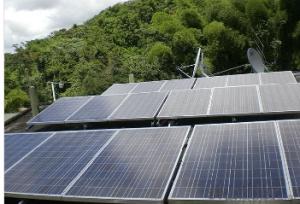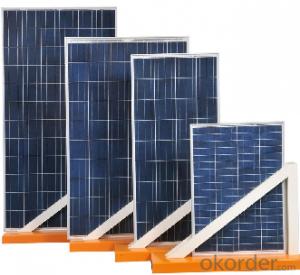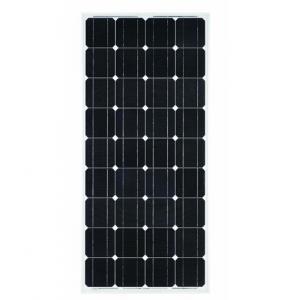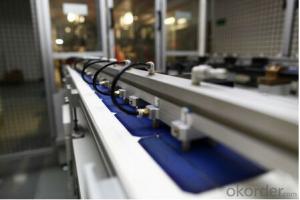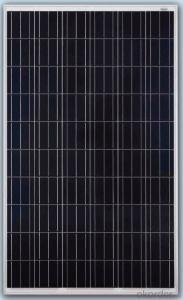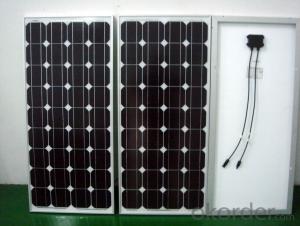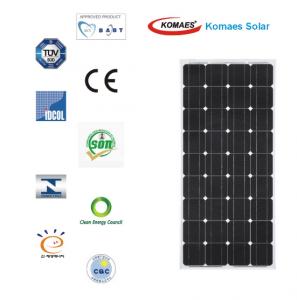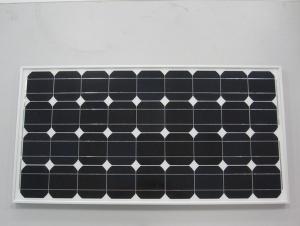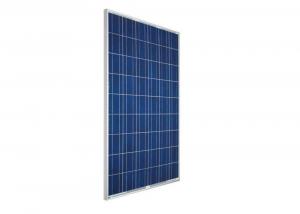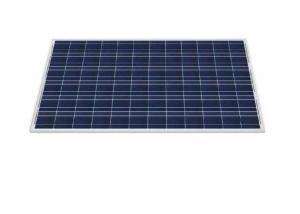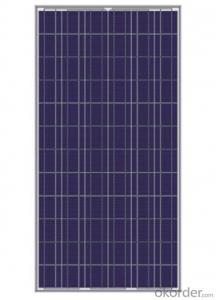150W C-Si Solar Panels with TUV IEC MCS CEC IDCOL SONCAP Certificates
- Loading Port:
- Shanghai
- Payment Terms:
- TT OR LC
- Min Order Qty:
- 1000 watt
- Supply Capability:
- 100000000 watt/month
OKorder Service Pledge
OKorder Financial Service
You Might Also Like
- TUV IEC, MCS (UK), CE, CEC (Australia), INMETRO, IDCOL, SONCAP CERTIFIED
- [EU ANTIDUMPING DUTY-FREE]
- PROFESSIONAL SOLAR PANEL MANUFACTURER SINCE 2004
FEATURES
`Long Service Life
`High Efficency Solar Cells
`Special Aluminum Frame Design
`High Transmission,Low Iron Tempered Glass
`Advanced Cell Encapsulation
APPLICATIONS
`Solar power stations
`Rural electrification, Small home power systems
`Power supply for traffic, security, gas industry
`12V and 24V battery charging system
`Other industrial and commercial applications
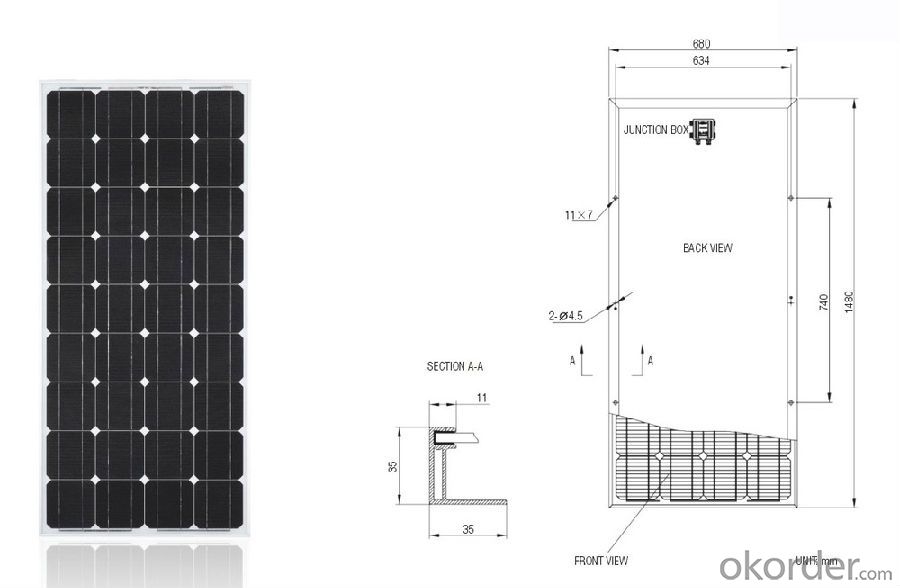
ELECTRICAL CHARACTERISTICS | ||||||
Model Number | KM130(6) | KM135(6) | KM140(6) | KM145(6) | KM150(6) | |
Maximum Power as per STC | Pmax(W) | 130 | 135 | 140 | 145 | 150 |
Power Tolerance | % | ±3% | ||||
Maximum Power Voltage | Vm(V) | 17.96 | 18.14 | 18.36 | 18.15 | 18.28 |
Maximum Power Current | Im(A) | 7.26 | 7.45 | 7.65 | 7.99 | 8.21 |
Open Circuit Voltage | Voc(V) | 21.6 | 21.74 | 21.96 | 21.72 | 21.9 |
Short Circuit Current | Isc(A) | 7.83 | 8.04 | 8.17 | 8.69 | 8.93 |
Maximum System Voltage | VDC | 1000 | ||||
Cell Efficiency | % | 15.0 | 15.5 | 16.1 | 16.7 | 17.3 |
Module Efficiency | % | 12.9 | 13.4 | 13.9 | 14.4 | 14.9 |
Cells per Module | Pcs | 36 | ||||
Cell Type | Monocrystalline silicon | |||||
Cell Size | mm | 156 x 156 | ||||
Bypass Diodes | Pcs | 10Amp, 2 pcs | ||||
Max. Series Fuse Rating | A | 10A | ||||
Temperature coefficient of Isc | %/°C | 0.05 | ||||
Temperature coefficient of Voc | %/°C | -0.35 | ||||
Temperature coefficient of power | %/°C | -0.47 | ||||
NOCT- Nominal operating cell temperature | °C | 47 ± 2 | ||||
Operating Temperature | °C | -40 ~ +85 | ||||
MECHANICAL CHARACTERISTICS | ||||||
Dimensions | mm | 1480 x 680 x 35 | ||||
Weight | Kg | 11.6 | ||||
Type of Junction Box | TUV certified, IP65 | |||||
Cable Type, Diameter | - | |||||
Connector | - | |||||
Tempered Glass | 3.2 mm, high transmission, low iron | |||||
Packing
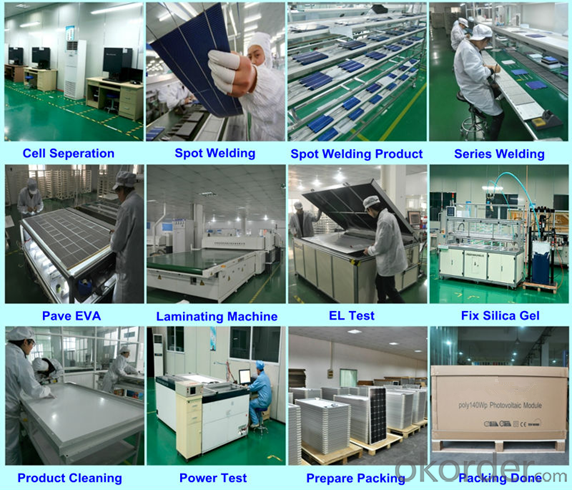
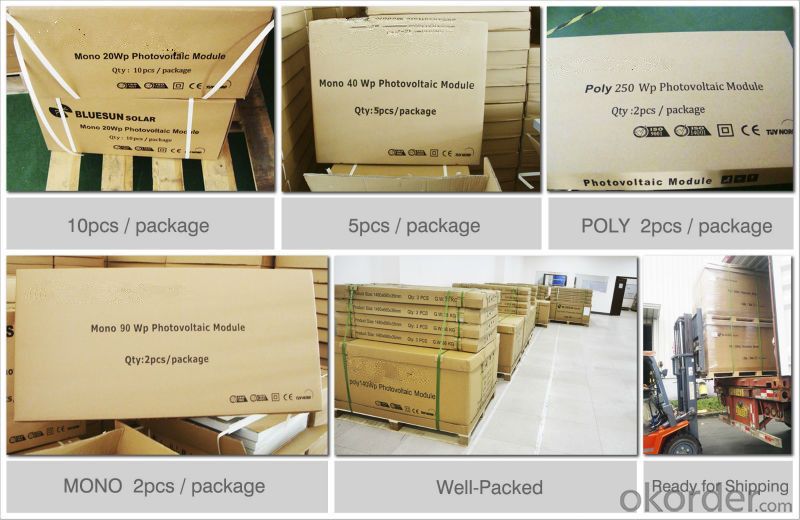
FAQ
1. What kind of Solar Cells does it have
---poly crystalline 156*156mm and 125*125mm or mono 125*125mm and 156*156mm
2. Is the front panel Glass or Plastic
---Tempered glass 3.2mm thickness or adjust to what you need, Light transmittance up to 95%.
3. Does it meet Europe Standards for Solar Energy
---This is TUV approval products, all the producing procedure apply TUV&UL.
4. What is the Efficiency level
--- Between 16-18.9% for solar cells.
5. What is the Nominal Voltage
--- 18v 20v 24v 36v 30v 48v , and so on, we can adjust to what you need.
6. What is the Warranty Period, How many years?
Power efficiency warranty:
---90% in 10 years; 80% in 25 years.
- Q: Can solar panels be installed on a boat?
- Yes, solar panels can be installed on a boat.
- Q: How many solar panels would it take to run an electric motor the needs 480 volts and pulls about 45 to 50 amps?
- Quite a bit to run 480 volts @ 50 amps. Ohms law will give you the basic level your looking for but also you need to consider power storage ... Conversions .... Start up power vs running power levels ... it can be done but this is a bigger system then what I need so I cant just give you an number your panels will be rated in wattage and amperage you then take that power and put it in storage (battery) to inverter system (mine is 20 volt) you will need to have a 480 inverter for your power level. good luck hope I was of some help.
- Q: Can solar panels be installed on historical or protected buildings?
- Yes, solar panels can be installed on historical or protected buildings. However, there are certain considerations and guidelines that need to be followed to ensure that the installation does not compromise the architectural integrity or cultural significance of the building. Special care is taken to design and install solar panels in a way that minimizes visual impact and preserves the historical value of the structure. Additionally, obtaining necessary permissions and approvals from relevant authorities is crucial before proceeding with the installation.
- Q: i dont wanna buy a solar panel becuase its too exspensive, i dont want use technical stuff i want to use every day materiels, but i need to know asap plzzzz.
- Make okorder
- Q: i want to know how to hook up solar panels to my existing power. all i can find on the internet is to use batteries and a inverter. but i want to use all of my existing lights and outlets off of the solar energy. i have heard that you can actually turn the meter backwards and use supplied power when needed. thats what i want to do and is it possible to do myself and if so, how?
- Hooking up without batteries is actually the most common way to do it, but it's a non-trivial project, and dangerous if you don't know what you're doing. There is a device called a grid-tied inverter - that performs the task of putting energy back into the power grid. The reason you don't see homemade panels being hooked to the grid is because the power company's permission is required, and they will not grant it unless you meet building codes, and those codes require parts with at least a UL listing. No homemade panels would quality.
- Q: What are the maintenance requirements for solar panels?
- The maintenance requirements for solar panels include occasional cleaning to remove dirt and debris, checking for any damage or loose connections, and ensuring that the panels are receiving sufficient sunlight. Additionally, regular monitoring of the system's performance and scheduling professional inspections can help identify and address any potential issues.
- Q: How much per sq inch do they cost? Will i have to worry about them blowing off during hurricane season? If the sun isnt out for a week will my power go out? Will I have to check them every week and check which ones arent working and replace them? Is there anyway for them to be damaged by acid rain or any type of erosion like hail? When do I have to replace them? How do I dispose of old ones (like recycling)? What is smarter and more economical having few big panels or many small ones? I know I have alot of questions but I want a good detailed answer.
- The cost of solar is measured in dollars per watt. That means the cost of a cell that can make one watt continuously in full sunlight. A friend of mine is starting a new job to set up a new solar cell factory and he said the present cost is $3 per watt, but that they expect to get that down to $ per watt in a few years. They can be damaged by weather, just like any regular roof. My insurance agent asked if I had solar panels, so it is a factor in insurance cost. I never heard of recycling or disposing of old panels, maybe because they are so new and last so long that not many are ready to be disposed of yet.
- Q: how would you build a solar panel
- As a sandwich. Glass Space /4 inch Glass Space with copper radiator painted flat black. Box made of wood. with the inside painted black. Insulate the back side. Use water with RV antifreese. Circulate water through with a small pump. Face it toward the sun. Thermal water solar Panel.
- Q: I am heading to Nepal and do not want to lose power on my cameras but they can only be charged via quot;plugging inquot;. A USB connection does not work. Looking for a solar panel to clip to my bag or carry that I can plug in the charger as if plugging in to wall outlet. Thanks.
- Solar panels require a charge converter before it can be used by an AC source. There is no direct solar panel with built in charge converters that I know of because, when purchasing panels, you must purchase the wattage requirements of the job (this can be several panels linked), and a charge converter that will handle the <? panels required. A chain of stores up here in Canada have a portable battery pack that has a solar panel to increase its charge capacity or duration, but its not something you would want to lug around for long periods of time, because is weights in about 3 lbs.
- Q: Okay, me and my friends are going to fix up an old trailer that's out in the woods, we want something to be able to run small electric appliances off of, but it's to far to run power to. How can we make a good but cheap homemade solar panel that we could plug things into? The trailer is in more of a field so it gets plenty of sunlight! Thanks for any help! :)
- you cant make solar panels to generate electricity at home. A LOT of high tech equipment is needed. About the cheapest option is to use solar powered garden lights but that is all you'll get is a bit of light.(Google making solar panels) You should be able to make up a windmill powered generator though (but dont expect much power out of something you can make easily) Do some research yourself
Send your message to us
150W C-Si Solar Panels with TUV IEC MCS CEC IDCOL SONCAP Certificates
- Loading Port:
- Shanghai
- Payment Terms:
- TT OR LC
- Min Order Qty:
- 1000 watt
- Supply Capability:
- 100000000 watt/month
OKorder Service Pledge
OKorder Financial Service
Similar products
Hot products
Hot Searches
Related keywords
